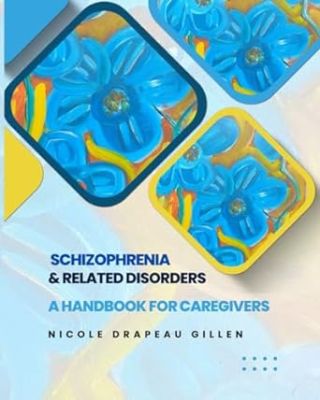Psychosis
A Field Guide for Schizophrenia?
Book review: "Schizophrenia and Related Disorders: A Handbook for Caregivers."
Posted May 20, 2024 Reviewed by Michelle Quirk
Key points
- The author's goal was to provide practical, actionable information for families.
- It covers medications, hospitalizations, arrests, housing, and legal, financial, and insurance issues.
- It discusses the underrecognized negative symptoms, such as loss of motivation and social withdrawal.

Some years ago, Nicole Drapeau Gillen found herself in a boat with her daughter, navigating waters that neither of them had imagined: schizophrenia. Unlike many conditions that arrive at birth or suddenly, schizophrenia enters the lives of individuals and families insidiously, typically beginning with subtle changes to mood, motivation, and concentration before blossoming into its hallmark symptoms of delusions and hallucinations. "It's a complicated, confusing, and insidious disease," Nicole expresses.
Yet, nothing would challenge Nicole's commitment to her daughter. Nicole dove deep into the realms of support groups and resources, searching for direction. What began as three bullet points listed on a page turned into five pages and then into a Word document that grew larger than she ever expected with critical information about the condition and how to manage its winding manifestations. Nicole quickly discovered that there was no field guide for families facing schizophrenia, so she created one. Her goal was to provide practical, actionable information for families, based on whatever situation they are facing with this illness.
In her book, Schizophrenia and Related Disorders: A Handbook for Caregivers, Nicole writes about how families can work through everything from medications to hospitalizations, arrests, housing and homelessness, and legal, financial, and even insurance issues. While not all of these are part of Nicole's family's journey, these are tragic realities for the more than three million people in the United States living with schizophrenia and their families (Kadakia et al., 2022).
Nicole contrasts a recent experience of care in her community wherein a Silver Alert rallied rapid response for a senior citizen with Alzheimer's who had gone missing with the apathy often facing families affected by serious mental illness: "if that person had been a 21-year-old with schizophrenia, none of that support would have been there." Yet, psychosis is often involved in cases of missing persons (Taylor et al., 2017) and is also a risk factor for loss of housing. These are the only health conditions treated more often in jails and prisons than in hospitals.
Through sharing the practical information, she has gathered with other families in an accessible way, Nicole hopes to help them chart these territories and the available resources. She also shares hope, referencing new research into interventions for schizophrenia.
I found her book easy to read and clinically sound, integrating important information for caregivers all in one place. She briefs on complex systems of care and information such as how to engage with a loved one's treatment team, advocate with insurance, and even support loved ones who are re-entering work after illness. She discusses medication, including the benefits of antipsychotics and managing side effects. This book contains information I wish into the hands of everyone who loves someone facing mental illness.
Something I really appreciated was the discussion of negative symptoms in schizophrenia, things like loss of motivation and social withdrawal. While these are incredibly common and disruptive to a person’s life, they often go unnoticed and unaddressed in treatment. Nicole highlights the importance of individuals and their loved ones understanding negative symptoms so that they know that they are neither stupid nor lazy. Research into mental illness remains decades behind other illnesses and research exploring research funding has shown that projects targeting schizophrenia are disproportionately underfunded (Torrey et al., 2022); new interest in negative symptoms has recently taken flight with investigatory interventions underway. This is something that lends hope.
As we talk, Nicole shares something that I will remember. She speaks of how she transitioned to a space of being a "lion mom." Though I had never heard the term before, I am so glad I got to hear Nicole’s definition first. When a person is living with a serious mental illness, often they need not only support but also advocacy—people in their lives who will show them endless love while taking a fierce stand against the illness. Nicole exemplifies that. She radiates compassion and cites her own parents as having supported her. This is something all families need, especially when encountering these deep difficulties.
References
Kadakia, A., Catillon, M., Fan, Q., Williams, G. R., Marden, J. R., Anderson, A., ... & Dembek, C. (2022). The economic burden of schizophrenia in the United States. The Journal of Clinical Psychiatry, 83(6), 43278.
Taylor, C., Woolnough, P. S., & Dickens, G. L. (2019). Adult missing persons: a concept analysis. Psychology, Crime & Law, 25(4), 396–419.


